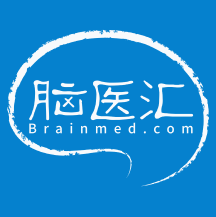Journal of Neurotrauma
The Ukraine War: Traumatic Brain Injury in a Front-Line Hospital
乌克兰战争:前线医院中的创伤性脑损伤
The location close to the front lines of Mechnikov Hospital in the eastern Ukrainian city of Dnipro creates both opportunities and challenges. The same medical teams have worked closely together for years. They have learned how to provide the best possible care despite personnel shortages and overwhelming patient volumes, including many patients who are critically ill with systemic as well as neurological injuries. Outcomes are better than many might expect. International support and collaboration have been instrumental in achieving these good outcomes. Mechnikov Hospital neurosurgeons have developed new patient care pathways and management techniques that they disseminate internationally through publications and academic conferences. Prospective studies and other research activities are underway despite the obvious challenges caused by the war. The lessons learned by the team at Mechnikov Hospital will benefit other patients both now and in the future, especially as the international medical community prepares for possible large-scale combat operations in austere environments.
乌克兰东部城市第聂伯罗的梅奇尼科夫医院地处前线附近,这一地理位置既带来了机遇,也伴随着挑战。该院的同一批医疗团队已紧密合作多年。尽管面临人员短缺、患者数量庞大(其中包括许多患有全身性损伤及神经损伤的危重病人)的困境,他们仍摸索出了提供尽可能优质医疗服务的方法。医院的治疗效果好于许多人的预期,而国际社会的支持与合作对实现这些良好成效起到了关键作用。梅奇尼科夫医院的神经外科医生制定了新的患者诊疗流程和管理技术,并通过学术出版物及学术会议向国际社会推广。尽管战争带来了显著挑战,前瞻性研究及其他科研活动仍在有序推进。无论是当下还是未来,梅奇尼科夫医院团队积累的经验都将使其他患者受益 —— 尤其是在国际医疗界为可能发生在艰苦环境下的大规模作战行动(所需要的医疗保障)做准备的背景下,这些经验的价值更为凸显。
REF: Sirko A, Armonda RA, Brody DL, Valadka AB. The Ukraine War: Traumatic Brain Injury in a Front-Line Hospital. J Neurotrauma. 2025;42(19-20):1901-1906. doi:10.1177/08977151251365558 PMID: 40759465
由人工翻译修正
Assessment of Cerebral Autoregulation Using Ultrasound-Based Intra- and Extracranial Blood Flow Indices in a Swine Model of Brain Injury
基于超声的颅内外血流指标在脑损伤猪模型中对脑血管自动调节功能的评估
Cerebrovascular autoregulation (CA) is a protective mechanism against brain injury. We present an ultrasound-based volumetric blood flow indices to monitor CA. FFx(s) demonstrated AUPRC and AUROC ranges (0.88–0.91) and (0.73–0.79). The FFx(s) can act as excellent potential surrogates for the PRx for the assessments of CA.
脑血管自动调节功能(CA)是一种保护大脑免受损伤的机制。本研究提出一种基于超声技术的容积血流指标,用于监测该功能。结果显示,血流/血流指数(FFx [s])的AUPRC范围为 0.88-0.91,AUROC范围为0.73-0.79。综上,在CA的评估中,FFx (s)可作为极具潜力的压力反应指数(PRx)替代指标。
REF: Tiba MH, Sharpe ZJ, Greer NL, et al. Assessment of Cerebral Autoregulation Using Ultrasound-Based Intra- and Extracranial Blood Flow Indices in a Swine Model of Brain Injury. J Neurotrauma. 2025;42(19-20):1891-1900. doi:10.1177/08977151251372544 PMID: 40899350
由人工翻译修正
Mild Traumatic Brain Injury Impairs Fear Extinction and Network Excitability in the Infralimbic Cortex
轻度创伤性脑损伤对边缘下皮质恐惧消退及网络兴奋性的损害
Traumatic brain injury (TBI) is a leading cause of morbidity and disability, with mild TBI (concussions) representing over 80% of cases. Although often considered benign, mild TBI is associated with persistent neuropsychiatric conditions, including post-traumatic stress disorder, anxiety, and depression. A hallmark of these conditions is impaired fear extinction (FE), the process by which learned fear responses are inhibited in safe contexts. This dysfunction contributes to maladaptive fear expression and is linked to altered neurocircuitry, particularly in the infralimbic cortex (IL), a key region in FE. Despite extensive evidence of impaired FE in patients with mild TBI and animal models, the specific mechanisms underlying this deficit remain poorly understood. This study aimed to address this gap by combining cued-FE behavior, local field potential recordings, and whole-cell patch-clamp techniques to investigate how mild TBI affects IL network activity and excitability in a mouse model of TBI. This study provides novel insights into how mild TBI disrupts the neurocircuitry underlying FE, specifically by suppressing IL excitability. These results highlight the importance of understanding the mechanistic disruptions in IL activity for developing therapeutic strategies to address fear-based disorders in patients with mild TBI.
创伤性脑损伤(TBI)是导致发病和残疾的主要原因之一,其中轻度创伤性脑损伤(即脑震荡)占比超过 80%。尽管轻度创伤性脑损伤常被认为是良性的,但它与持续性神经精神疾病相关,包括创伤后应激障碍、焦虑症和抑郁症。这些疾病的一个典型特征是恐惧消退(FE)受损。恐惧消退指在安全环境中,后天习得的恐惧反应被抑制的过程。这种功能障碍会导致适应性不良的恐惧表现,并与神经环路改变相关,尤其是在恐惧消退的关键脑区——边缘下皮质(IL)。尽管有大量证据表明轻度创伤性脑损伤患者及动物模型存在恐惧消退受损的情况,但导致这种缺陷的具体机制仍未被充分了解。本研究旨在填补这一空白,通过结合线索恐惧消退行为实验、局部场电位记录和全细胞膜片钳技术,在创伤性脑损伤小鼠模型中探究轻度创伤性脑损伤如何影响边缘下皮质的网络活动及兴奋性。该研究为轻度创伤性脑损伤如何破坏恐惧消退相关神经环路(具体表现为抑制边缘下皮质兴奋性)提供了新的见解。这些结果强调,理解边缘下皮质活动的机制性破坏,对于制定治疗策略以改善轻度创伤性脑损伤患者的恐惧相关疾病具有重要意义。
REF: Ubri CE, Farrugia AM, Cohen AS. Mild Traumatic Brain Injury Impairs Fear Extinction and Network Excitability in the Infralimbic Cortex. J Neurotrauma. 2025;42(19-20):1868-1890. doi:10.1089/neu.2025.0046 PMID: 40401451
由人工翻译修正
Clostridium butyricum Restores Intestinal Barrier Integrity via the IL-22/Reg3 Pathway Following Traumatic Brain Injury in Mice
丁酸梭菌通过IL-22/Reg3通路恢复创伤性脑损伤小鼠的肠道屏障完整性
Traumatic brain injury (TBI) disrupts the intestinal barrier, linking brain trauma to systemic inflammation and secondary complications. This study investigated the role of gut microbiota and its metabolites in intestinal barrier dysfunction following TBI, using a controlled cortical impact mouse model. The findings identify the SCFA/IL-22/Reg3 axis as a key mediator of gut barrier homeostasis after TBI and highlight the potential therapeutic role of butyrate-producing probiotics in managing TBI-associated intestinal complications.
创伤性脑损伤(TBI)会破坏肠道屏障,使脑损伤与全身性炎症及继发性并发症产生关联。本研究采用控制性皮质撞击小鼠模型,探究了肠道微生物群及其代谢物在创伤性脑损伤后肠道屏障功能障碍中的作用。研究结果表明,短链脂肪酸/白细胞介素-22/再生蛋白3(SCFA/IL-22/Reg3)轴是创伤性脑损伤后维持肠道屏障稳态的关键介导通路,同时也凸显了产丁酸益生菌在防治创伤性脑损伤相关肠道并发症方面的潜在治疗作用。
REF: Liu M, Pang Y, Xu L, et al. Clostridium butyricum Restores Intestinal Barrier Integrity via the IL-22/Reg3 Pathway Following Traumatic Brain Injury in Mice. J Neurotrauma. 2025;42(19-20):1843-1867. doi:10.1177/08977151251367404 PMID: 40879524
由人工翻译修正
Repeated Exposures to Air Travel-Relevant Hypobaria Induce Anxiety-Like Behavior and Alter Functional Connectivity and White Matter Integrity in a Ferret Model of Traumatic Brain Injury
在创伤性脑损伤雪貂模型中,反复暴露于航空旅行相关低压环境可诱发类焦虑行为并改变功能连接及白质完整性
Under-vehicle blast (UVB) caused by landmine detonation induces a distinct traumatic brain injury (TBI) and can be accompanied by head impact. Injured soldiers often undergo multiple flights after injury to access medical care and return to duty. Previous work has shown that low air pressure during air travel (hypobaria [HB]) exacerbates neurological injury, but the effects of one or more HB exposures on chronic brain injury are unknown. We hypothesized that multiple HB exposures after TBI would result in worse outcomes than 0–1 exposures. Together, these suggest that multiple HB exposures after BCCI exacerbate changes in neurological activity in the anxiety regulation brain network, as well as structural damage in the anxiety-associated WM tracts. Our findings demonstrate that air travel after TBI, particularly multiple flights, can have a chronic negative impact on brain structure and function.
地雷引爆引发的车底爆炸(UVB)会导致一种特殊类型的创伤性脑损伤(TBI),且可能伴随头部撞击。受伤士兵在受伤后往往需要搭乘多次航班,以获取医疗救治并重返岗位。以往研究表明,航空旅行中的低气压环境(即低压环境,简称HB)会加重神经损伤,但暴露于1次或多次低压环境对慢性脑损伤的影响尚不明确。本研究假设,创伤性脑损伤后多次暴露于低压环境,会比暴露0-1次导致更差的预后。这些结果表明,脑震荡后综合征(BCCI)发生后,多次暴露于低压环境会加剧焦虑调节脑网络中神经活动的改变,同时也会加重与焦虑相关的白质通路的结构损伤。本研究结果证实,创伤性脑损伤后乘坐飞机(尤其是多次飞行),可能对大脑结构和功能产生慢性负面影响。
REF: Jiang L, Goodfellow MJ, Xu S, et al. Repeated Exposures to Air Travel-Relevant Hypobaria Induce Anxiety-Like Behavior and Alter Functional Connectivity and White Matter Integrity in a Ferret Model of Traumatic Brain Injury. J Neurotrauma. 2025;42(19-20):1830-1842. doi:10.1089/neu.2024.0531 PMID: 40510002
由人工翻译修正
The Polytrauma Clinical Triad Among Women with a History of Intimate Partner Violence
有亲密伴侣暴力史女性中的创伤临床三联征
Women with a history of intimate partner violence (IPV) are at risk for traumatic brain injury (TBI) with persistent neurobehavioral symptoms, post-traumatic stress disorder (PTSD), and chronic pain, which, together, characterize the polytrauma clinical triad. Among predominantly male Veteran samples, research has suggested that the triad may exacerbate health problems, compared with the presence of any component of the triad alone. The current study is the first to explore the polytrauma clinical triad among a sample of cisgender women who have experienced IPV (N = 198; M = 39.6 years old, SD = 11.9; 83.3% White, 7.1% Hispanic; 59.1% college-educated). The findings suggest that, especially when comorbid with IPV-related TBI, chronic pain may be a priority treatment target among individuals with a history of IPV. Considering that women with a history of IPV often experience concurrent health conditions, multicomponent interventions that address each condition within the polytrauma clinical triad may benefit this population.
有亲密伴侣暴力(IPV)史的女性面临创伤性脑损伤(TBI)风险,常伴随持续性神经行为症状、创伤后应激障碍(PTSD)及慢性疼痛——这些症状共同构成了创伤临床三联征。在以男性退伍军人为主要研究对象的样本中,已有研究表明,与仅存在三联征中任一单一症状相比,多创伤临床三联征可能会加剧健康问题。本研究首次以有亲密伴侣暴力经历的顺性别女性为研究对象(样本量N=198;平均年龄 M=39.6岁,标准差SD=11.9;83.3%为白人,7.1% 为西班牙裔;59.1% 具有大学学历),探索该群体中的多创伤临床三联征情况。研究结果表明,尤其当慢性疼痛与亲密伴侣暴力相关的创伤性脑损伤共病时,慢性疼痛可能成为有亲密伴侣暴力史人群的优先治疗靶点。考虑到有亲密伴侣暴力史的女性常同时存在多种健康问题,针对多创伤临床三联征中每种病症制定的多成分干预方案,或能为该人群带来益处。
REF: Leong SE, Logan TK, Badour CL, Karr JE. The Polytrauma Clinical Triad Among Women with a History of Intimate Partner Violence. J Neurotrauma. 2025;42(19-20):1816-1829. doi:10.1089/neu.2025.0064 PMID: 40510001 PMCID: PMC12570867
由人工翻译修正
Global, Regional, and National Burden of Traumatic Brain Injury, 1990–2021: A Systematic Analysis for the Global Burden of Disease Study 2021
1990-2021年全球、区域及国家层面创伤性脑损伤疾病负担:2021年全球疾病负担研究的系统分析
Traumatic brain injury (TBI) is a major global health concern, contributing substantially to mortality and disability. While previous studies have reported the global and regional burden of TBI, few have explored its long-term trends, cause-specific burden, sociodemographic disparities, and future projections in a comprehensive framework. To address this gap, we conducted a retrospective analysis using the Global Burden of Disease 2021 data to estimate TBI incidence, prevalence, and years lived with disability across sex, age, and Sociodemographic Index (SDI) quintiles. We used average annual percent change (AAPC) to evaluate temporal trends from 1990 to 2021 and applied Spearman’s correlation to examine the association between age-standardized incidence rate (ASIR) and SDI. While the ASIR and ASPR of TBI have decreased, the absolute number of cases has risen, underscoring the need for public health interventions that consider regional differences in TBI trends and causes in order to effectively reduce the burden.
创伤性脑损伤(TBI)是全球重大健康问题,对死亡率和残疾率的影响显著。尽管以往研究已报告了创伤性脑损伤的全球及区域疾病负担,但鲜有研究在综合框架下探究其长期趋势、特定病因负担、社会人口学差异及未来预测情况。为填补这一空白,本研究利用2021年全球疾病负担(GBD)数据开展回顾性分析,旨在按性别、年龄及社会人口学指数(SDI)五分位数,估算创伤性脑损伤的发病率、患病率及残疾调整生命年。研究采用平均年度百分比变化(AAPC)评估1990年至2021年的时间趋势,并通过斯皮尔曼相关分析探究年龄标化发病率(ASIR)与社会人口学指数(SDI)之间的关联。结果显示,尽管创伤性脑损伤的年龄标化发病率(ASIR)和年龄标化患病率(ASPR)有所下降,但其绝对病例数仍在增加。这一发现凸显了制定公共卫生干预措施的必要性。此类措施需考虑创伤性脑损伤在不同区域的趋势差异及病因差异,方能有效降低其疾病负担。
REF: Gu L, Zhang L, Li C, et al. Global, Regional, and National Burden of Traumatic Brain Injury, 1990-2021: A Systematic Analysis for the Global Burden of Disease Study 2021. J Neurotrauma. 2025;42(19-20):1805-1815. doi:10.1089/neu.2025.0039 PMID: 40622274
由人工翻译修正
Outcomes and Challenges in Treating Acute Subdural Hematoma in Older Adults with a GCS Score of 3–5: A Nationwide Retrospective Analysis in Korea
韩国全国性回顾性分析:格拉斯哥昏迷评分 3-5 分老年患者急性硬膜下血肿
Traumatic brain injury with a Glasgow Coma Scale (GCS) score of 3–5 is characterized by severe injury, poor prognosis, and low survival rates. Deciding between aggressive neurosurgery and treatment discontinuation is challenging among older adults. This study analyzed the characteristics, treatment, and outcomes of acute subdural hematoma (ASDH) in older adults with a GCS score of 3–5 to assess the benefits of surgery and guide future treatment decisions. The GCS score at admission was significantly associated with pupil reactivity; Rotterdam computed tomography score; time interval from injury to operation and arrival to operation; treatment; and hospital stay between patients who died and those who survived. Surgical treatment was significantly associated with a lower mortality rate but not with good recovery rates.
格拉斯哥昏迷评分(GCS)为3-5分的创伤性脑损伤,具有损伤程度重、预后差、存活率低的特点。对于老年患者,在积极神经外科手术与停止治疗之间做出抉择颇具挑战性。本研究分析了GCS评分3-5分老年患者中急性硬膜下血肿(ASDH)的临床特征、治疗方式及预后,旨在评估手术的获益并为未来治疗决策提供指导。研究结果显示,在死亡患者与存活患者之间,入院时GCS评分与以下因素存在显著关联:瞳孔反应性、鹿特丹计算机断层扫描评分、从受伤到手术的时间间隔、从入院到手术的时间间隔、治疗方式,以及住院时长。此外,手术治疗与更低的死亡率显著相关,但与良好恢复率无显著关联。
REF: Eom KS; KNTDB Investigators. Outcomes and Challenges in Treating Acute Subdural Hematoma in Older Adults with a GCS Score of 3-5: A Nationwide Retrospective Analysis in Korea. J Neurotrauma. 2025;42(19-20):1796-1804. doi:10.1089/neu.2025.0009 PMID: 40401450
由人工翻译修正
Ageing with Traumatic Brain Injury: Long-Term Cognition and Wellbeing
创伤性脑损伤患者的衰老进程:长期认知功能与健康福祉
Whether and how traumatic brain injury (TBI) impacts ageing in the decades post-injury remains a matter of debate, partly due to a lack of controlled studies. This study examined the long-term impact of TBI on cognition and wellbeing in middle-aged and older adults and explored the relationship between age, cognition, and wellbeing, compared with a non-TBI control group. Our results challenge the notion that TBI exacerbates ageing. Moderate-severe TBI resulted in significant long-term impairments in cognition and wellbeing, with verbal learning and memory more impaired during middle-adulthood but not older adulthood compared to controls. TBI was not associated with changes to wellbeing with ageing. Intervention for verbal memory deficits in middle-aged adults with TBI is important, along with wider long-term supports for cognition, wellbeing, and activity participation in all individuals with TBI.
创伤性脑损伤(TBI)在损伤发生后的数十年间是否会影响衰老进程、又会以何种方式影响,目前仍是争议话题,部分原因在于缺乏对照研究。本研究探讨了创伤性脑损伤对中老年人群认知功能与健康福祉的长期影响,并与无创伤性脑损伤的对照组对比,探究年龄、认知功能与健康福祉三者间的关系。研究结果对“创伤性脑损伤会加剧衰老”这一观点提出了挑战。中重度创伤性脑损伤会导致认知功能与健康福祉出现显著的长期损伤;与对照组相比,中重度创伤性脑损伤患者在中年时期的言语学习与记忆能力受损更明显,但在老年时期无此差异。此外,创伤性脑损伤与健康福祉随年龄增长的变化无关联。对于患有创伤性脑损伤的中年患者,针对其言语记忆缺陷的干预措施十分重要;同时,应为所有创伤性脑损伤患者提供更广泛的长期支持,以改善其认知功能、健康福祉并促进其参与日常活动。
REF: Ayton A, Spitz G, Hicks AJ, Ponsford J. Ageing with Traumatic Brain Injury: Long-Term Cognition and Wellbeing. J Neurotrauma. 2025;42(19-20):1786-1795. doi:10.1089/neu.2024.0524 PMID: 40233137
由人工翻译修正
- 1
- 2












